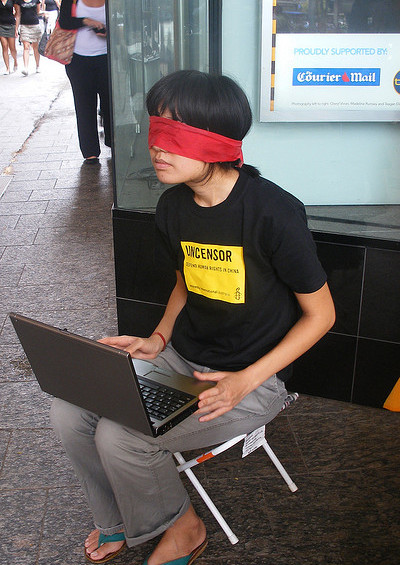US: China’s Example for Today’s Latinos
Long before Latinos became the target of anti-immigration sentiments, Chinese laborers were in the crosshairs of nativist Americans.
August 9, 2019

Editor’s Note: This article was originally published on September 4, 2007.
By 1892, thousands of Chinese had escaped from enslaved labor in the Caribbean and from the violence of the roundups in the western United States.
Seeking respite in New England, New York and the South, Chinese immigrants now lived outside the frontier states. The Geary Act unified Chinese across the country, building a Chinese American identity that crossed generations of immigrants who rallied quickly to put pressure on Washington, organize petition drives — and coordinate diplomatic intervention from New York, Washington and San Francisco.
In New York and Brooklyn, the Chinese Equal Rights League soon enrolled 150 English-speaking Chinese merchants and professionals, most of whom had lived in the United States for more than ten years, some since their childhood. Its leaders pleaded "to the people of this great Republic to deliver their fellow countrymen from this outrageous persecution."
Coming in the early years of the Age of Reform, the Geary Act's assault on Chinese civil liberties prompted white support for the Chinese. On September 22, 1892, more than 1,000 U.S. citizens joined with 200 Chinese merchants and laborers at Cooper Union in Manhattan to protest the Geary Act.
The Chinese Equal Rights League declared that by making the Chinese pay the "illegal costs and expenses" of enforcing the law, the bill imposed taxation without representation.
Even more un-American, they said, was its provision that a person arrested under the law "shall be adjudged guilty until he shall affirmatively prove his innocence."
The Chinese offensive against the Geary Act drew together strategies of resistance that had been evolving since the gold rush. "As residents of the United States," the league declared, "we claim a common manhood with all other nationalities" that should be recognized according to the principles of American freedom.
By claiming a "common manhood" with other American immigrants, the Chinese Equal Rights League sought to dissolve images of difference — in body, religion, dress, food — that saturated American editorials, broadsheets, advertisements and cartoons and shaped the unequal treatment of the Chinese under immigration law.
The league also attacked the idea that the Chinese were sojourners in the United Stares. It appealed for an "equal chance in the race of life in this, our adopted home… Our interest is here, because our homes, our families and our all are here. America is our home through long residence. Why, then, should we not consider your welfare ours?"
The purpose of the Geary Act was to pressure "more than 100,000 honest and respectable Chinese residents" to leave the country by forcing them "to wear the badge of disgrace [like] men in your penitentiaries" or to "tag and brand [them] as a whole lot of cattle for the slaughter."
Nonetheless, the league members wanted to distinguish themselves from refugees from the West Coast or enslaved laborers fleeing Cuba, Mexico and Peru. "We do not want any more Chinese here any more than you do," they asserted. "The scarcer the Chinese here, the better would be our conditions among you."
Up and down the Pacific coast, Chinese laborers and merchants demanded help from China and pressured the Chinese legation to lobby Congress and the president.
It complained to Secretary of State James G. Blaine that the Geary Act violated the promise in the 1880 immigration treaty that Chinese immigrants would have the right to "go and come of their own free will and accord."
The provision forcing every Chinese resident in the United States to wear an identifying photograph likened the Chinese to convicts and violated "every principle of justice, equality, reason and fair dealing between two friendly powers." It demanded that the secretary of state personally guarantee that Chinese in the United States never again be "abused, beaten, wounded and murdered."
The Chinese Exclusion Act of 1882 was due to expire. To revive it, many white Americans promoted the toxic myth of a "yellow peril."
Popularized by politicians, preachers and the press, the myth predicted that the Chinese would "swarm" the country and form a dictatorship — of greedy, dirty, dishonest and fertile yellow men.
The House Committee on Immigration and Naturalization reported that after 1892, "there will be no law to prevent the Chinese hordes from invading our country in numbers so vast as soon to outnumber the present population of our flourishing states on the Pacific slope…to make this country their temporary home, where in a few years they can accumulate enough to live the balance of their days in China in comparative ease."
Having spent four decades demanding Chinese expulsion, many in California were suddenly threatened by its possibility. In the 1890s, California agriculture was enjoying spectacular growth. Farmers leased small plots of land to hundreds of Chinese tenants for vineyards, orange and lemon groves, and orchards.
The cultivation, harvesting and packing of California's crops depended on Chinese labor. Without the Chinese, the new fruit industry would wither. Farmers also knew that the Chinese were building the long routes and short-haul tracks of the new railroads.
Under the land grants, the railroads still controlled hundreds of thousands of acres of arable land, as well as the power of transportation itself — the refrigerated railroad cars, the location of terminals, the grain towers — indeed, the entire nexus on which the sales of the fruit of the land depended. Who else would build and fire this iron web? Some farmers thought that only an "influx" of blacks could replace Chinese labor.
The Geary Act fractured rural political coalitions. While railroad investors, fruit growers and missionary groups opposed the act, others were determined to enforce it.
The Geary Act came at a moment of intense labor unrest and industrial violence. In July 1892, President Harrison sent 8,000 militia to break the steelworkers' strike against the Homestead plant — part of Carnegie Steel and Utah Copper, seven miles east of Pittsburgh.
The strike ended brutally when guards opened fire on the employees and seven guards and nine steelworkers died. Many in the labor movement believed that Chinese immigrants would provide a permanent supply of scabs.
In 1893, a series of business failures and bank closings shook the nation. The Panic of 1893, caused by the completion of the nation's basic steel and railroad requirements, marked the end of an era of easy investment and massive profit and the beginning of six years of crippling unemployment.
Millions of Americans were out of work, and those who still had jobs took repeated cuts in already-low wages. The Chinese field-workers' wage of one dollar per day was in fact higher than the 60 cents earned by many white textile workers. As growing economic disparities provoked new racial tensions, the national government had to tread lightly on California farmers' demands for cheap labor.
The nation was divided: Fifteen states and territories sent petitions to Congress and to President Harrison urging them to deport the Chinese, prompting the Los Angeles Times to comment, "If we can keep out the Chinese, there is no reason why we cannot exclude the lower classes of Poles, Hungarians, Italians and some other European nations, which people possess most of the vices of the Chinese and few of their good qualities, besides having a leaning towards bloodshed and anarchy which is peculiarly their own."
The Geary Act embodied the dilemma of the Chinese as a racial problem and a racial solution. By April 1893, Chinese leaders and the Chinese legation had let it be known that they would contest the act.
The Chinese vice consul in San Francisco, Qing Ow Yang, begged his government, "Do you know what the Geary bill means to the laboring Chinese in this country? It means, sir, that they are placed on the level with your dogs.”
"If you have a dog, a black and tan, a Llewellyn setter, a pointer, you buy a license tag for it and fasten it to the dog's collar, and the number in the dog's tag is its immunity from arrest by the poundman. Under the Geary bill the laboring Chinese carry their number in their pocket and any man who so desires may stop them and demand to see their ‘tag'… We ask that our Government protect its children."
Protests also arose within Congress. Illinois representative Robert R. Hitt had tried to stop the Geary Act's passage and now denounced the act as a return to the days of slavery:
"It is proposed to have 100,000…men in our country ticketed, tagged, almost branded — the old slavery days returned. Never before in a free country was there such a system of tagging a man like a dog to be caught by the police and examined, and if his tag or collar is not all right, taken to the pound or drowned or shot… Never before was it applied by a free people to a human being with the exception (which we can never refer to with pride) of the sad days of slavery."
At first, most Chinese men found ways to avoid registering for the identity cards. With rising threats of racial violence, many Chinese purchased revolvers, ammunition and knives.
When the California Jute Mill threatened to fire any Chinese employee who refused to obtain a certificate and helped the Bureau of Internal Revenue set up secret offices, the Six Companies ordered the jute workers to strike. Chinese laborers let it be known that if they were seized and deported, they would join mounting efforts to drive American missionaries and businessmen out of China.
The Six Companies foiled other Bureau of Internal Revenue plans for secret registration. Registrars, paid one dollar per certificate, offered to visit homes so domestic servants could sign in private.
Many Chinese residents, fearing that the identity cards exposed their homes, refused to register at any site. Some declared that only the "Christianized Chinese" registered. Those who believed that the only way to remain in the United States was to register rightly feared retaliation from their brethren.
Editor’s note: This feature is adapted from “Driven Out: The Forgotten War Against Chinese Americans” by Jean Pfaelzer. Copyright 2007 by Jean Pfaelzer. Reprinted with permission of the author.

